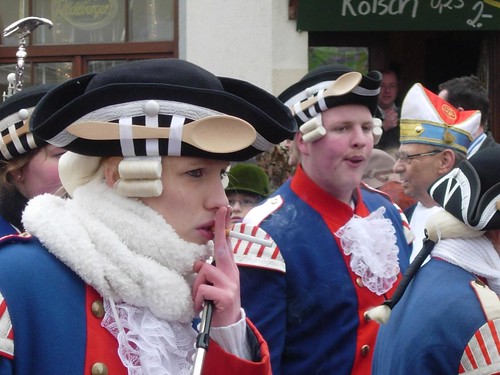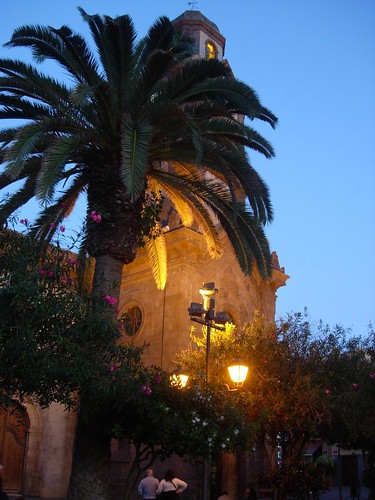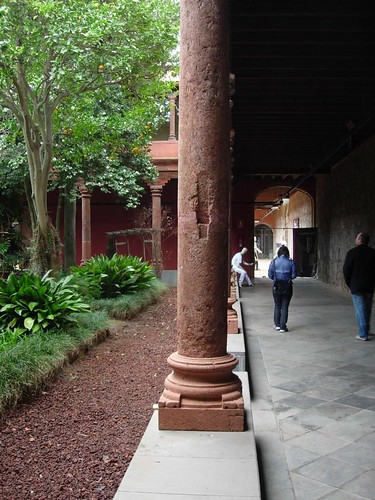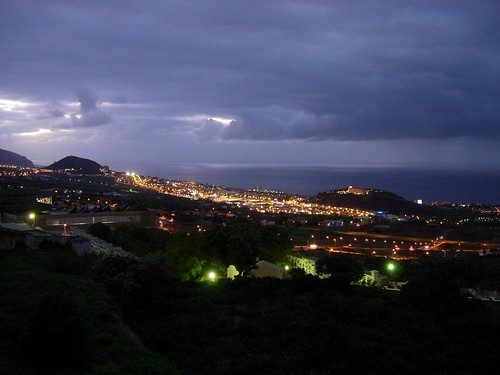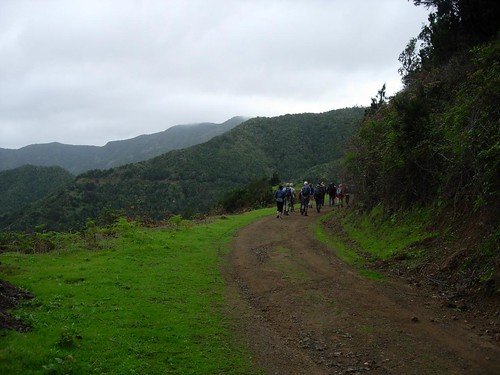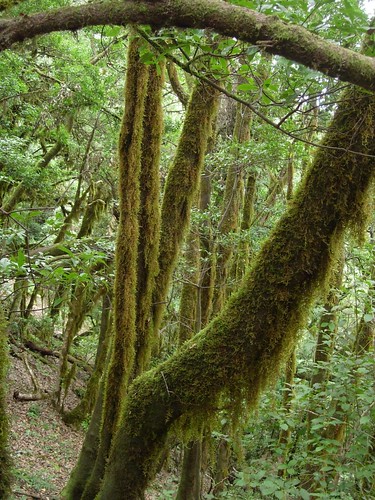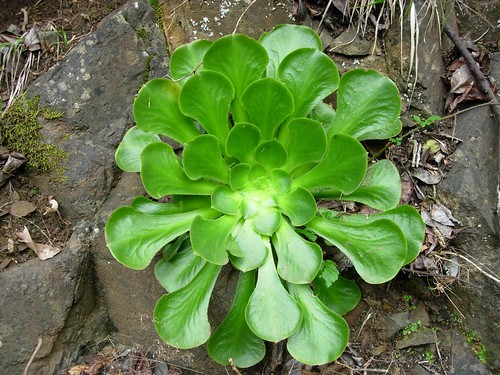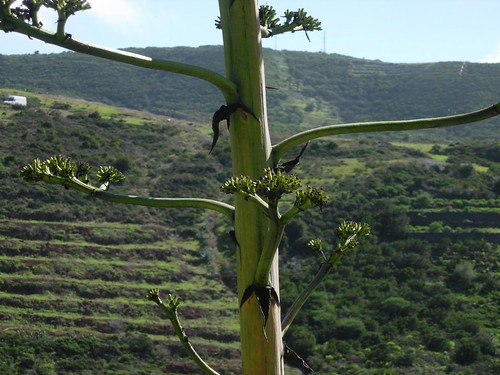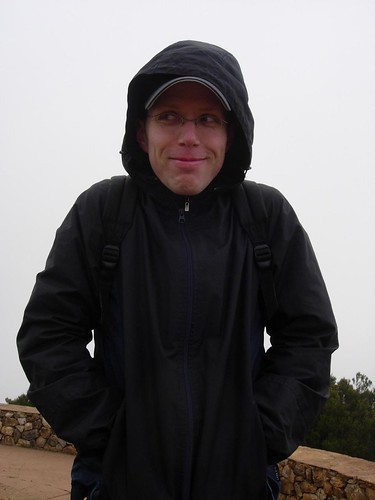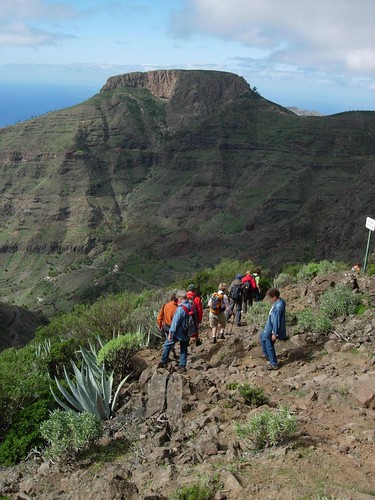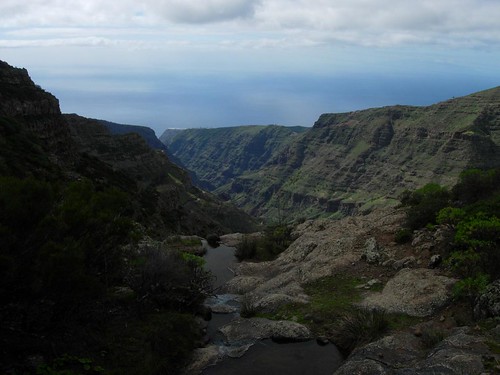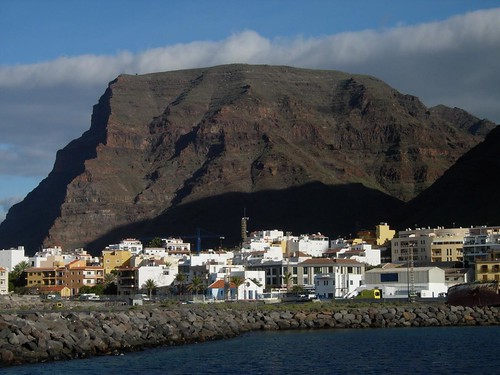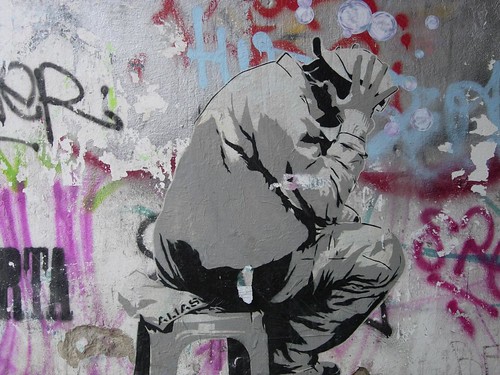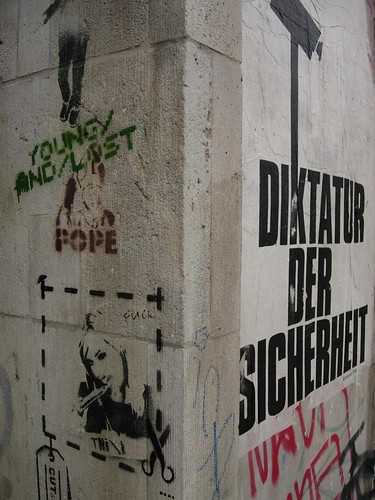As you may have gathered from previous posts, Europe has had a cold, snowy, dark winter. Berlin broke a record for most consecutive days without seeing the sun. Fortunately, E. and I scheduled a get-away to the Canary Islands in the gap between the conclusion of Bosch seminar II, and the start of her new post in Bonn.
In the wee early hours we stood freezing in little more than our windbreakers to hail a taxi to Tegel airport. Several hours later we had arrived in Madrid. As we stood on the jet bridge, preparing to board our second flight, a hot, high-in-the-sky sunlight poured down on us, and we knew were were doing the right thing to escape from northern Europe.
The Canary Islands are off the western coast of Morocco. They are to northern Europe as Hawaii and the Caribbean are to the mainland United States: it's where you go to warm up during winter. The Canaries are subtropical, not tropical, so the weather is springlike, rather than summery, but we weren't objecting.
Here's the view flying into Tenerife. That's Teide in the background, a volcano that dominates the island. Elevation 3,718 metres (12,198 ft).
When we got out of the airport it was warm and breezy, and there were palm trees lining the street. Wearing windbreakers didn't seem so crazy as it did back in Berlin.
From the airport we took a bus to Los Cristianos, and then sauntered down to the port...
... where we hopped on a boat to Valle Gran Rey, on the southwestern edge of La Gomera, the next island to the west of Tenerife. The water was rough, and everyone on the boat was on the edge (or over the edge) of seasickness.
On arrival, we walked through the dark to our hotel. Had I not investigated where I was going, I'm sure I would have been nervous. Everything was dark, the sidewalk was narrow, and the ocean was crashing on the other side of a breakwater. But we found our hotel quickly and easily, and at the reception we were greeted in German.
Yeah, La Gomera has a reputation as an outpost for German hippies. If you can speak German, you've no need for speaking Spanish. You can even buy your groceries at a Spar.
Anyhow, by daylight, the valley and the little encampment at water's edge (three mostly contiguous villages, La Puntila, La Calera, and La Playa Calera) are something else entirely. Dramatic volcanic cliffs rise steeply above a tidy, quiet seaside resort.
I'll blog more about the rest of our trip as time permits.


